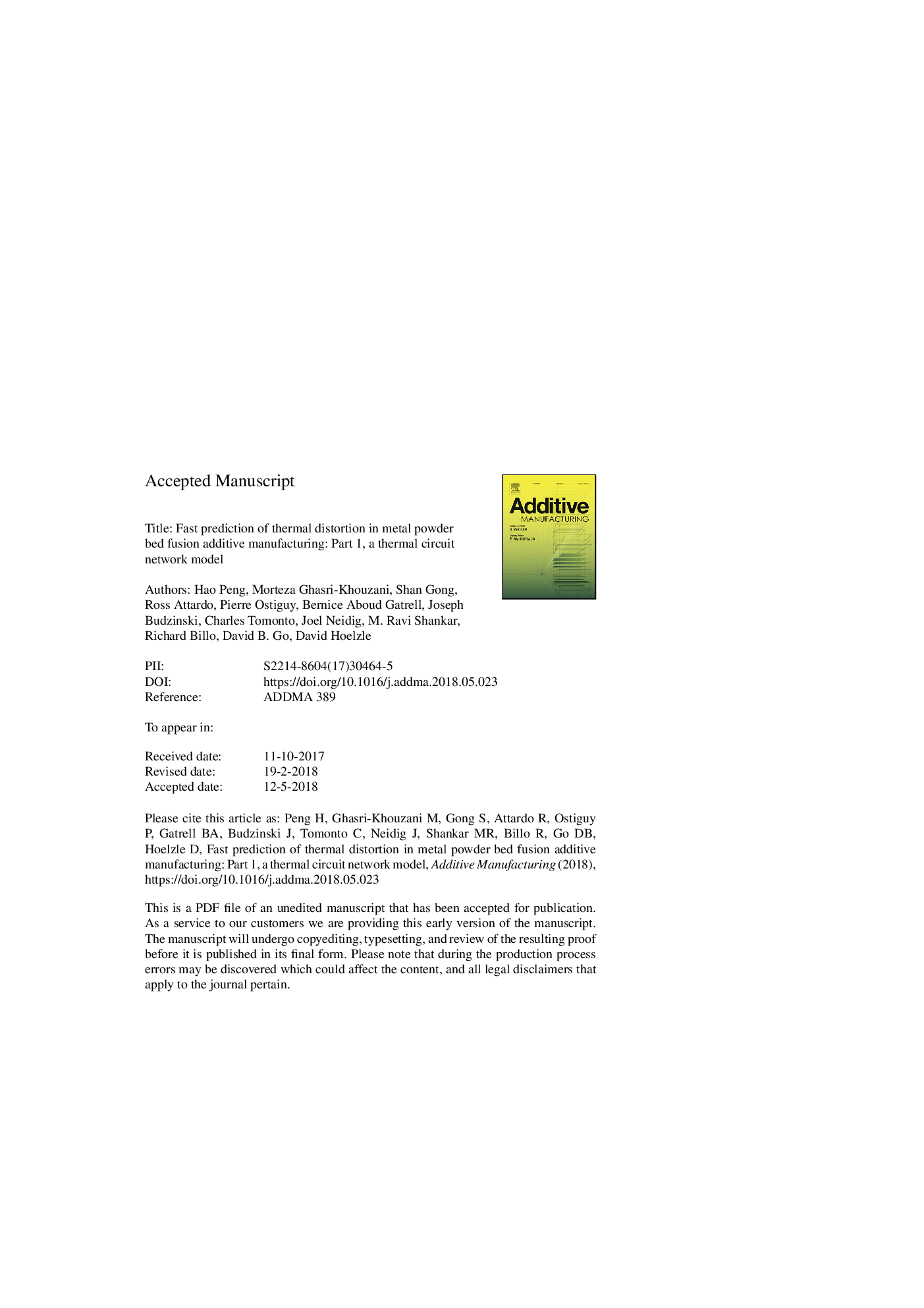| Article ID | Journal | Published Year | Pages | File Type |
|---|---|---|---|---|
| 7205829 | Additive Manufacturing | 2018 | 42 Pages |
Abstract
The additive manufacturing (AM) process metal powder bed fusion (PBF) can quickly produce complex parts with mechanical properties comparable to wrought materials. However, thermal stress accumulated during PBF induces part distortion, potentially yielding parts out of specification and frequently process failure. This manuscript is the first of two companion manuscripts that introduce a computationally efficient distortion and stress prediction algorithm that is designed to drastically reduce compute time when integrated in to a process design optimization routine. In this first manuscript, we introduce a thermal circuit network (TCN) model to estimate the part temperature history during PBF, a major computational bottleneck in PBF simulation. In the TCN model, we are modeling conductive heat transfer through both the part and support structure by dividing the part into thermal circuit elements (TCEs), which consists of thermal nodes represented by thermal capacitances that are connected by resistors, and then building the TCN in a layer-by-layer manner to replicate the PBF process. In comparison to conventional finite element method (FEM) thermal modeling, the TCN model predicts the temperature history of metal PBF AM parts with more than two orders of magnitude faster computational speed, while sacrificing less than 15% accuracy. The companion manuscript illustrates how the temperature history is integrated into a thermomechanical model to predict thermal stress and distortion.
Keywords
Related Topics
Physical Sciences and Engineering
Engineering
Industrial and Manufacturing Engineering
Authors
Hao Peng, Morteza Ghasri-Khouzani, Shan Gong, Ross Attardo, Pierre Ostiguy, Bernice Aboud Gatrell, Joseph Budzinski, Charles Tomonto, Joel Neidig, M. Ravi Shankar, Richard Billo, David B. Go, David Hoelzle,
